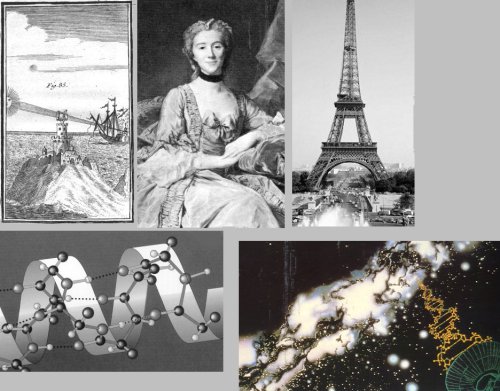The Face of a Century
Today, we ask what a century looks like. The University of Houston's College of Engineering presents this series about the machines that make our civilization run, and the people whose ingenuity created them.
Have you ever thought about the way centuries have personalities? Look at the twentieth century. It's been an era of decentralization. Quantum mechanics and relativity theory fragmented reality. They entered along with pointillism and atonality, which dismantled hierarchy. And with them came socialistic experiments in government. The automobile and airplane decentralized cities. The electric motor decentralized factories. And PCs have finally been decentralizing workplaces.
Most of that had origins in the late nineteenth century. But people like Einstein, Planck, Schönberg, Henry Ford, Picasso, and the Wright Brothers made their mark in the first few years of the twentieth century. The nineteenth century had been the epoch of heroic materialism -- a centralization century -- a time to make great monoliths of science, empire, and industry. The personal steam car, invented in the late eighteenth century, got nowhere in the face of central rail systems.
Of course, the personalities of centuries overlap. The personality of the nineteenth century ran from the mid 1780s up to WW-I. In the eighteenth century, the so-called Age of Enlightenment, we tried to recreate Classical order -- in science, music, art, architecture. I suppose that began with Newton in the 1680s and lasted until the Battle of Waterloo. It ended only as the Romantic poets finally gained a foothold on the Western imagination.
The seventeenth century has an especially distinct face. Shakespeare's plays began announcing it in the 1590s by changing the English language from the complex metaphors of Elizabethan prose to far more direct ways of saying things. In the early years of the century, Galileo brought new observational methods to science, and Francis Bacon formalized those methods.
Kepler made it clear that we could learn the physical laws governing planetary motions. The world became something we could take apart and study. Hooke's microscope showed how insects were made. Leeuwenhoek's microscope showed us germs. In 1675, Ole Roemer accurately measured the speed of light. People began speculating about life on other planets. The seventeenth century was about all the wonderful new ways of gaining knowledge.
So I look around and wonder what personality the twenty-first century will have. We've gone from a century of new science, to one of neoclassicism, to one of heroic materialism, to decentralization. History tells us we should already know what's coming next. I find it a chilling thought that the Einstein and the Picasso of the twenty-first century already walk among us. But we don't yet know who they are or what shape they'll give to our grandchildren's lives. The new century is right here at our elbow. But it's still invisible, and it's still unpredictable.
I'm John Lienhard, at the University of Houston, where we're interested in the way inventive minds work.
(Theme music)
